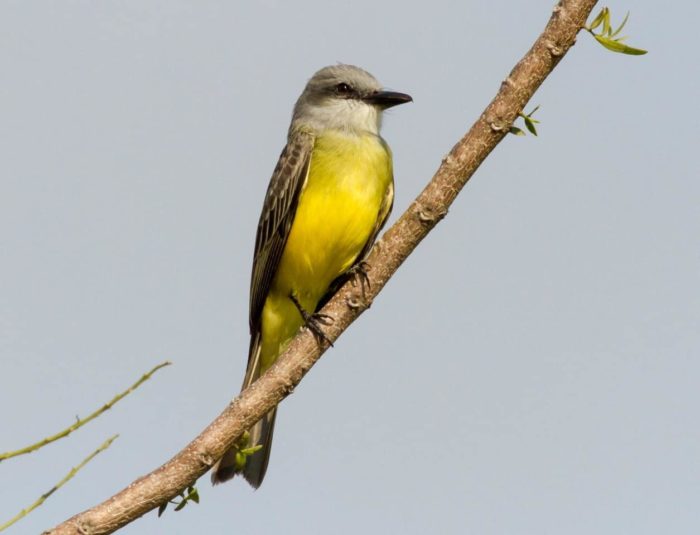We continue our exploration of the diverse birdlife found in San José by focusing on five more species that are commonly seen in the city’s trees, telephone wires, rooftops, and sidewalks. Whether you’re strolling through the bustling streets or relaxing in a park, these birds are a familiar sight and sound, contributing to the vibrant urban ecosystem.
From the colorful and noisy Crimson-fronted Parakeet to the ever-present Rufous-collared Sparrow, San José is teeming with avian life. Let’s take a closer look at these fascinating birds and their unique behaviors.
1. Crimson-fronted Parakeet (Psittacara finschi)
Spanish & Costa Rican local names: Perico Frentirrojo, Cotorra, Chucuyo, Perico Colilarga, Perico de Palmera*

A few parrot species can be found in San José, but the Crimson-fronted Parakeet is by far the most common. These birds are an energetic bunch, flocking in groups to building eaves and trees with an incessant chatter that can be deafening if you find yourself next to a tree full of them. Here’s the sound of a flock flying overhead (some taxonomic authorities refer to this species as Finsch’s Parakeet/Aratinga finschi):
Although this species is abundant in San José, it’s actually quite special in that it’s a regional endemic: its entire range extends only from Nicaragua to western Panama. It belongs to the Psittacidae family, along with parrots and macaws.
2. Rufous-collared Sparrow (Zonotrichia capensis)
Spanish & Costa Rican local names: Chingolo, Comemaíz, Pirrís

You can’t walk very far down a sidewalk in San José without running into a pair of Rufous-collared Sparrows hopping around on the ground or flitting between bushes. Like most members of its family, this species has a conical bill ideal for cracking seeds and grains, hence its local name Comemaíz. It belongs to the Emberizidae family, along with finches, buntings, and other New World sparrows. Its vocalizations include a whistled song:
3. Tropical Kingbird (Tyrannus melancholicus)
Spanish & Costa Rican local names: Tirano Tropical, Pecho Amarillo

Like the Great Kiskadee we described last month, the Tropical Kingbird belongs to Tyrannidae, the tyrant flycatcher family, and is one of about a dozen birds known as pecho amarillo in Costa Rica. Flycatchers are known for, well, fly catching. Like many of its relatives, the Tropical Kingbird frequently hunts flying insects by making quick flights known as “sallies” and returning to the same perch.
4.Rufous-tailed Hummingbird (Amazilia tzacatl)
Spanish & Costa Rican local names: Amazilia Rabirrufa, Gorrión

Costa Rica is home to about 50 of the roughly 340 known hummingbird species, and this one is the most common in the gardens and open areas of the Central Valley. The Rufous-tailed Hummingbird is highly aggressive and territorial at bunches of flowers, readily chasing off other hummers. They have a variety of vocalizations, including this song:
Hummingbirds make up the Trochilidae family, and occur only in the Americas. As one might expect from the size of their feet, they can’t really walk, but can shuffle sideways along a perch.
5. White-winged Dove (Zenaida asiatica)
Spanish & Costa Rican local names: Paloma Aliblanca, Arrocera

This species is about the same size as the common city pigeon (Rock Pigeon) and much larger than the Inca Dove. Like many other doves and pigeons – which collectively make up the Columbidae family – the White-winged Dove forages for seeds, grain and grit largely by walking (not hopping) on the ground, its head bobbing. Its throaty call is often transliterated as ‘who-cooks-for-you’:
* All Spanish and local species names are taken from the Asociación Ornitológica de Costa Rica.
Check out other “Into the Wild” columns here.
See Part 1 of this series: Urban flocks (Part 1): 5 common birds of San José
Written by Robin Kazmier






